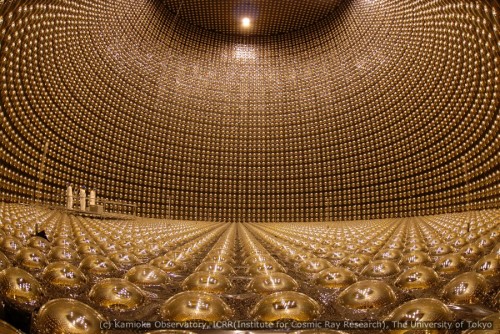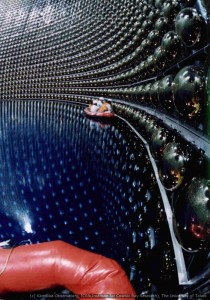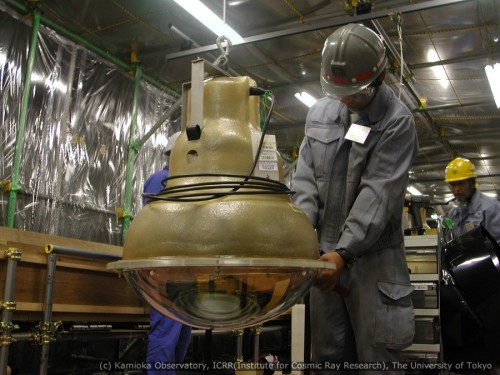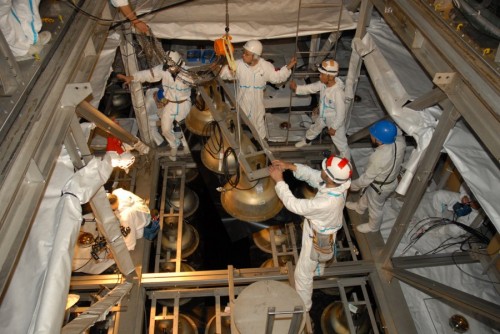
The Super-Kamiokande is a submerged neutrino (cosmic ray) detector located in Mount Kamiokakō in Japan, 1000 meters underground in an old mineshaft. The enormous apparatus is primarily used for detecting supernovas and cosmic rays. Originally constructed in 1993, the detector allowed researchers to detect proton decay, a feature which previous detectors lacked. The Super-Kamiokande is 15 times larger than its predecessor, giving it unchallenged accuracy at the time.
The Super-Kamiokande consists of a 41m tall by 39m wide stainless-steel tank filled with purified water. The walls of the tank are lined with 13,000 photomultiplier tubes (think night vision goggles for cosmic rays). The photomultipliers amplify the cosmic rays and measure them, sending data back to a central computer system. Very accurate information regarding the ring direction and type of neutrino sensed can be derived from the time and magnitude measurements of the photomultiplier tube.
In 2001, one of the photomultiplier tubes imploded, setting off a chain reaction of imploding tubes in the detector tank. The detector was restored by removing the damaged detectors and evenly distributing the remaining detectors. Full reconstruction did not take place until 2006, when over 6,000 detector tubes were replaced and covered with acrylic shields to prevent future implosion.
Over many years, the Super-Kamiokande and predecessors have detected many solar phenomena, detected data from exploding stars, and could possibly help us understand more about the formation of matter in the future.
For more information about the Super-Kamiokande and for high-resolution photos (albeit a slow server), check out the official site. Wikipedia also has a concise article regarding the Super-Kamiokande and neutrino detectors in general.
Photos graciously provided by Kamioka Observatory at the University of Tokyo.




Leave a Reply